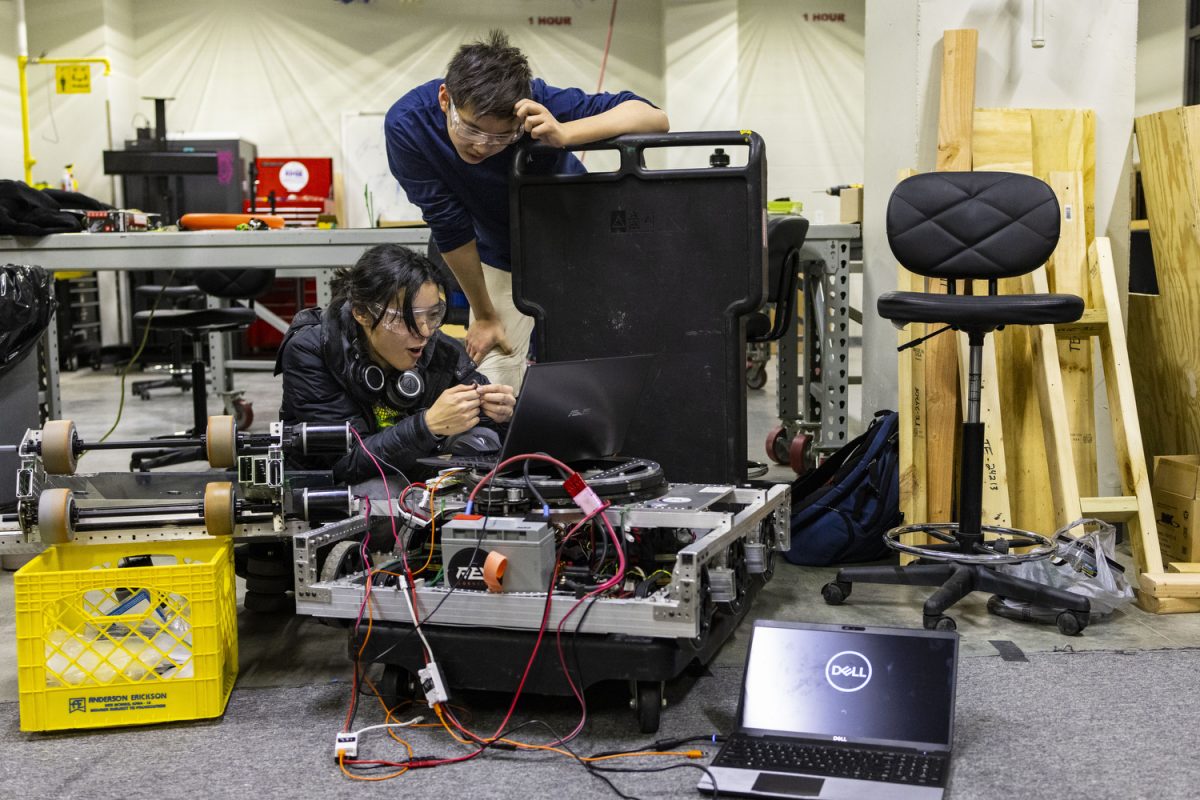Iowa City Robotics, a team of robot-building high schoolers, gave a 16-month-old boy the chance to explore the world on wheels.
Modified with a push-to-accelerate button, extra Styrofoam padding, and a wider seat, Simon Madsen of Iowa City, who was born with a degenerative muscle disease called LAMA2-related muscular dystrophy, is able to drive the
mini car.
Learn more here:
The group presented the miniature plastic car on Jan. 12, and the team plans to make more.
“It’s exciting,” Maddie Madsen, Simon’s mother, said. “Just being able to see him move around, we know that he’s going to be tearing through our halls really quickly, which is what a 16-month-old should do.”
Maddie Madsen said her son’s type of muscular dystrophy impacts between 1 in 50,000 and 1 in 400,000 people worldwide. Nearly 250,000 people in the U.S. have some form of muscular dystrophy.
The idea to make the car for Simon started when IC Robotics was approached by Connie Moore, Simon Madsen’s physical therapist. Moore works in Iowa City with the Grant Wood Area Education Agency and presented a plan to IC Robotics on how to build the car through an international program called GoBabyGo.
GoBabyGo works in communities as chapters encouraging miniature vehicle builds and provides resources and instructions on how to build the cars. GoBabyGo was founded in 2012 by James Galloway, a physical therapist involved in infant mobility research. Galloway said kids have received around 15,000 cars from these chapters globally.
Galloway said kids having the opportunity to move at a young age drastically impacted their long-term cognitive development.
“The major things you’re learning in the first years of life come out of your physical interactions and your social interactions,” Galloway said. “You can’t learn all the basic cognitive things without interacting in play.”
Traditional power wheelchairs cost thousands of dollars, which Galloway said is a serious problem.
“The dark side of this is that GoBabyGo shouldn’t even exist,” Galloway said. “Kids should get mobility because it is a human right, as soon as they need it.”
Galloway found that building mini cars for kids was not only cheap, with materials totaling a couple of hundred dollars, but also gave children who otherwise were immobile the chance to develop their cognitive skills.
“You don’t have to walk through life, you can roll through it,” Galloway said. “As long as you can explore it through rolling, you can get some of the same benefits, and there’s no other way around it.”
Moore said IC Robotics decided to start working on the car for Simon right away.
“I was so impressed with the group,” Moore said. “They just jumped right in with it and decided then and there to take it on.”
With IC Robotics’ decision to build the car, the community pitched in as well.
Michael Livermore, who coaches IC Robotics with his wife, Madison Kriege, said the group received a material donation from Iowa City Parks and Recreation as well as a monetary donation from the company Procter & Gamble.
High school senior and IC Robotics member Spencer Thomas said the car was easy to build with the team, and he enjoyed seeing Simon use it for the first time.
“It was really cool to see all of our hard work pay off in the end,” Thomas said.
Plans to build more cars are currently being developed. Moore said she plans on working with IC Robotics in the future and encourages other robotic groups to build cars.
“There’s a lot of children in the Iowa City area that could benefit from a GoBabyGo car,” Moore said. “We are already planning on starting a new one in August.”
Galloway said GoBabyGo’s impact brings communities together, which is part of the reason for its global success.
“When a parent looks around and sees a community, having stopped their lives and poured their time and effort into their loved one and their sweetheart, it is overwhelming,” Galloway said. “It is really supportive and important, and hopefully it’s not a flash-in-the-pan thing.”



